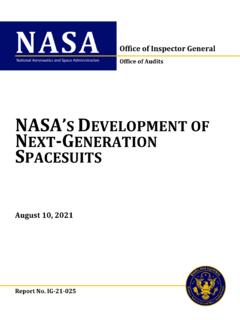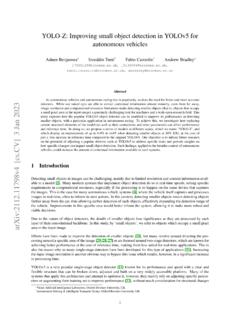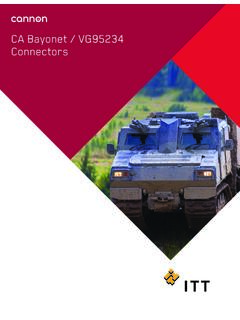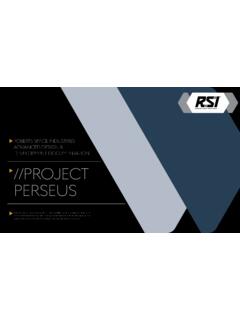Transcription of Final Report - IG-22-007 - NASA's Management of Its ...
1 NASA National Aeronautics and Space Administration Office of Inspector General Office of Audits NASA S Management OF ITS ASTRONAUT CORPS January 11, 2022 Report No. IG-22-007 Office of Inspector General To Report , fraud, waste, abuse, or mismanagement, contact the NASA OIG Hotline at 800-424-9183 or 800-535-8134 (TDD) or visit You can also write to NASA Inspector General, Box 23089, L Enfant Plaza Station, Washington, 20026. The identity of each writer and caller can be kept confidential, upon request, to the extent permitted by law. To suggest ideas or request future audits, contact the Assistant Inspector General for Audits at -----RESULTS IN BRIEF NASA s Management of Its Astronaut Corps January 11, 2022 IG 22 007 (A 21 005 00) NASA Office of Inspector General Office of Audits WHY WE PERFORMED THIS AUDIT As NASA enters a new era of human space flight, including returning to the Moon and eventually landing humans on Mars, effective Management of its astronaut corps the people who fly its space flight missions is critical to the Agency s success.
2 Astronauts serve as the face and voice of the Agency s efforts to inspire the next generation of explorers, scientists, and engineers. After reaching its peak of nearly 150 astronauts in 2000, the size of the corps diminished with the end of Space Shuttle missions in 2011 and now stands at 44, one of the smallest cadres of astronauts in the past 20 years. NASA s Flight Operations Directorate, responsible for training NASA astronauts, and NASA s Astronaut Office, responsible for managing the astronaut corps, face several challenges in a post- Shuttle era, including: meeting the Agency s goal of deep space travel; maintaining and expanding a presence in low Earth orbit, in particular on the International Space Station (ISS or Station); executing space flight missions on multiple vehicles; and aiding in the design and development of other systems for Artemis missions. In this Report , we examined NASA s Management of its astronaut corps, specifically the extent to which NASA s processes for sizing, training, and assigning the corps are aligned with the Agency s current and future missions and objectives.
3 To complete our work, we interviewed Agency officials from the Human Exploration and Operations Mission Directorate at Headquarters, Johnson Space Center, Kennedy Space Center, and Marshall Space Flight Center, and reviewed Agency documentation guiding NASA s Management of the astronaut corps and human space flight operations. WHAT WE FOUND The processes NASA uses to size, train, and assign astronauts to specific missions are primarily calibrated toward meeting the current needs of the ISS. For example, NASA s process for sizing the astronaut corps is designed to ensure that a sufficient number of astronauts are available to meet the Agency s flight manifest needs, which includes maintaining a planned crew of between three and four astronauts on the Station over the next 5 years. However, the astronaut corps is projected to fall below its targeted size or minimum manifest requirement in fiscal year (FY) 2022 and FY 2023 due to attrition and additional space flight manifest needs.
4 More concerning, the Astronaut Office calculated that the corps size would exactly equal the number of flight manifest seats NASA will need in FY 2022. As a result, the Agency may not have a sufficient number of additional astronauts available for unanticipated attrition and crew reassignments or ground roles such as engaging in program development, staffing Astronaut Office leadership and liaison positions, and serving as spokespeople for the Agency. In light of the expanding space flight opportunities anticipated for the Artemis missions, the corps might be at risk of being misaligned in the future, resulting in disruptive crew reorganizations or mission delays. Over time, the specific skillsets needed within the astronaut corps have evolved with the Agency s space flight missions from Apollo s need for test pilots to the Station s need for scientists and mission specialists.
5 As the Artemis program offices work with the Flight Operations Directorate and Astronaut Office to identify required skillsets for space flight missions beyond the ISS (including pilots, medical doctors, and scientists), the composition of skillsets within the corps may need to be augmented to ensure sufficient capacity to execute Artemis missions. However, astronaut skillset data is not consistently collected, comprehensively organized, or regularly monitored or updated. The Chief and Deputy Chief of the Astronaut Office said they can use various tracking systems, if needed, but given the small number of astronauts in the corps they primarily rely on their own informal knowledge to inform skillset decisions. While this kind of informal decision making has been used to manage ISS missions, it might not be effective as the size of the corps increases, still-evolving Artemis requirements are incorporated into astronaut training, and attempts to track skillsets over time for multiple missions become more complex.
6 The Astronaut Office s personnel databases also lack comprehensive demographic information specific to the astronaut corps. This poses a challenge to assessing whether NASA is meeting Agency and Administration diversity, equity, inclusion, and accessibility objectives. In recent years, the Agency has prioritized these efforts and announced its intent to land the first woman and first person of color on the Moon as part of the Artemis missions. Additionally, the Administration has made recent requests to the Astronaut Office to provide greater detail on diversity within the corps. Current data limitations restrict NASA s ability to fully measure its progress towards meeting broader diversity, equity, inclusion, and accessibility goals a significant issue given that astronauts are among the most publicly visible employees at the Agency. As the Agency prepares for crewed Artemis missions, astronaut training needs will change. As with sizing, the current astronaut training framework is primarily aligned to ISS mission requirements.
7 The Astronaut Office is in the process of developing a framework for Artemis training, but this framework has not been formally chartered nor have any Artemis crews been announced. As such, specific mission-focused training for the Artemis II mission the first crewed Artemis flight has not yet begun. While the Astronaut Office estimates training for the Artemis III and successor missions will require approximately 2 years, even with the projected delays to Artemis II and III launches the Agency could be overestimating the time available to develop and implement the necessary training framework and regimen across key Artemis systems, including the Orion Multi-Purpose Crew Vehicle (Orion), next-generation spacesuits, Human Landing System (HLS), and Gateway. Delays in moving beyond the current ISS-focused approach for current and future astronauts increase the risk of delays in developing the necessary training to meet Artemis mission goals.
8 WHAT WE RECOMMENDED To ensure the astronaut corps is aligned to meet current and future mission needs, we made four recommendations, including for NASA s Director of the Flight Operations Directorate and the Chief of the Astronaut Office to further centralize and maintain its collection, summary, and monitoring of detailed astronaut data including skills, certifications, training, and demographics to better support the sizing and alignment of the astronaut corps, and to help inform recruiting and training of astronauts to fulfill NASA s strategic goals, including continuing to expand the diversity of the astronaut corps. To ensure the training process for future Artemis missions is developed with sufficient time for implementation and revision, the Director of the Flight Operations Directorate and the Chief of the Astronaut Office should coordinate with Artemis program offices to complete the development and chartering of the framework of Artemis boards and panels to ensure alignment with future mission training needs for new vehicles and missions, including Orion, next-generation spacesuits, HLS, and Gateway.
9 We provided a draft of this Report to NASA Management who concurred with our recommendations. We consider Management s comments responsive; therefore, the recommendations are resolved and will be closed upon completion and verification of the proposed corrective actions. For more information on the NASA Office of Inspector General and to view this and other reports visit TABLE OF CONTENTS 1 Background .. 1 NASA s Processes for Managing the Astronaut Corps Are Primarily Driven by ISS Needs and Are Not Fully Aligned to Future Mission Requirements ..11 NASA s Sizing Process for the Astronaut Corps Is Primarily Aligned to the Current Needs of the ISS Program but May Not Fully Address the Agency s Future Goals ..11 Astronaut Training Is Adequate for ISS Needs but Needs to Be Updated for Artemis Program Crew Mission Assignment Process Is Largely at the Discretion of the Chief Astronaut and Aligned to ISS Program Needs.
10 22 Conclusion ..26 Recommendations, Management s Response, and Our Evaluation ..27 Appendix A: Scope and Methodology ..29 Appendix B: Management s Comments ..32 Appendix C: Report NASA Office of Inspector General IG-22-007 i Acronyms ETRIP Expedition Training Requirements Integration Panel FOD Flight Operations Directorate FY fiscal year HEOMD Human Exploration and Operations Mission Directorate HLS Human Landing System HSFO Human Space Flight Operations ISS International Space Station ITCB International Training Control Board OIG Office of Inspector General PPBE Planning, Programming, Budgeting, and Execution NASA Office of Inspector General IG-22-007 ii INTRODUCTION As NASA enters a new era of human space flight, including returning to the Moon and eventually landing on Mars, effective Management of its astronaut corps the people who train to fly space flight missions is critical to the Agency s success.











